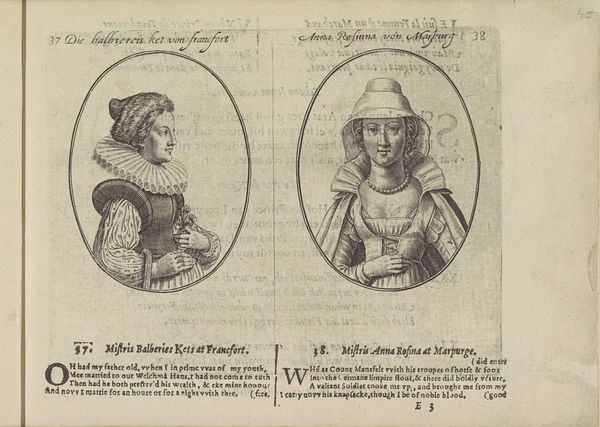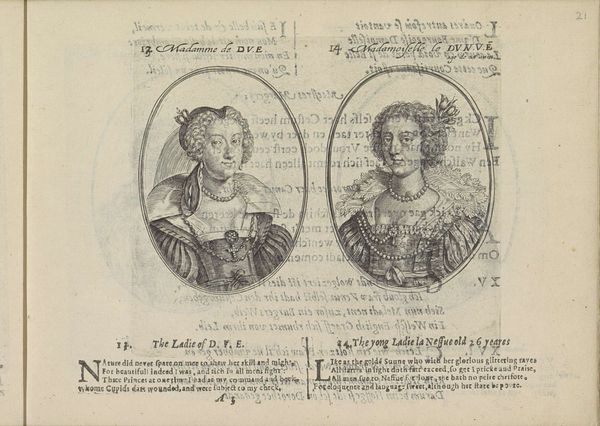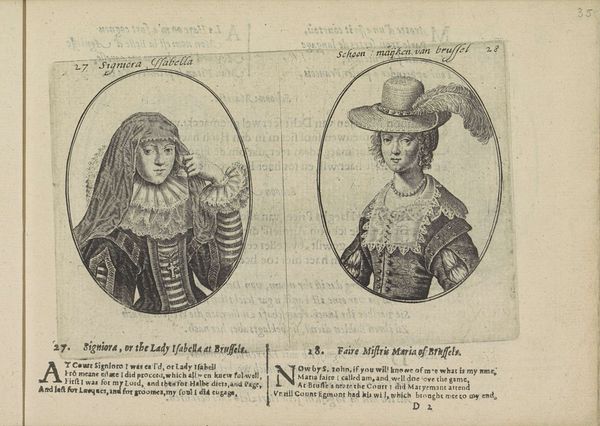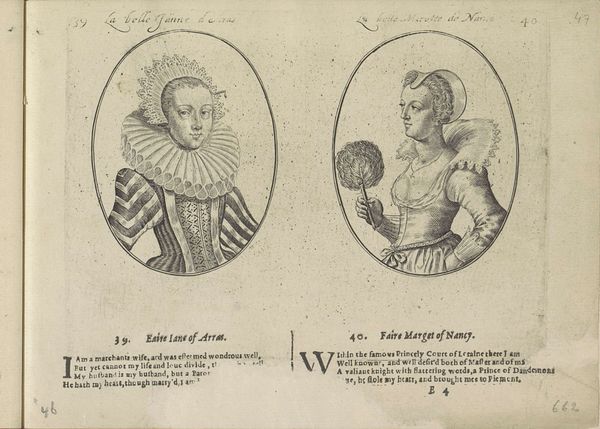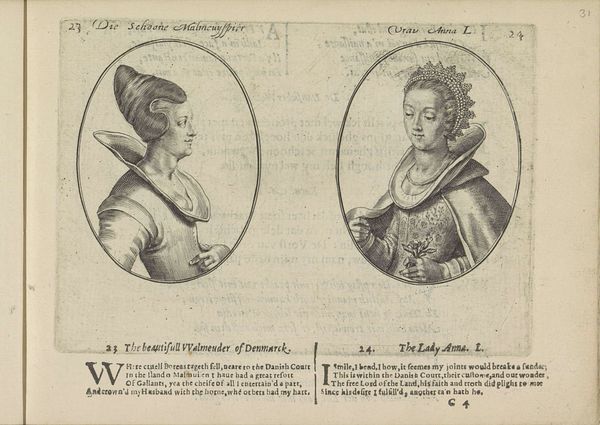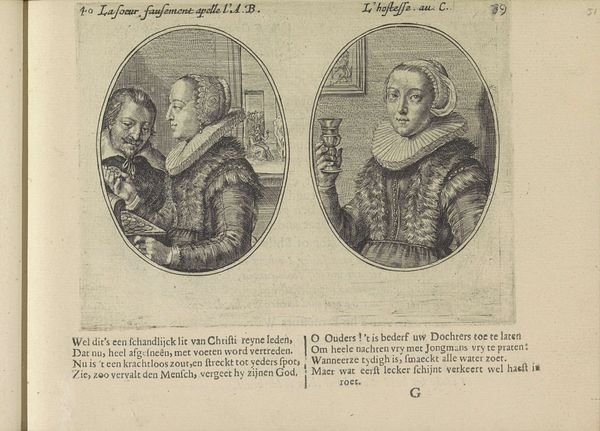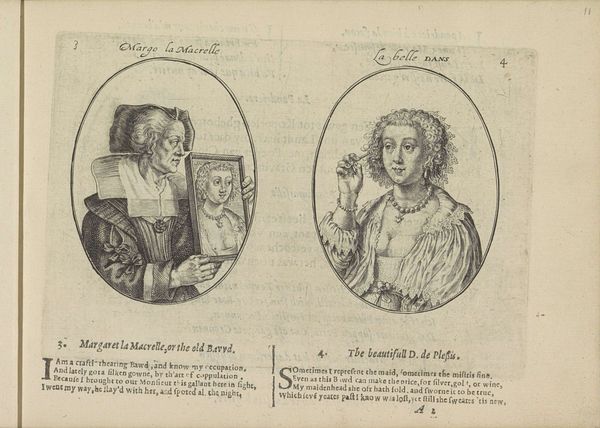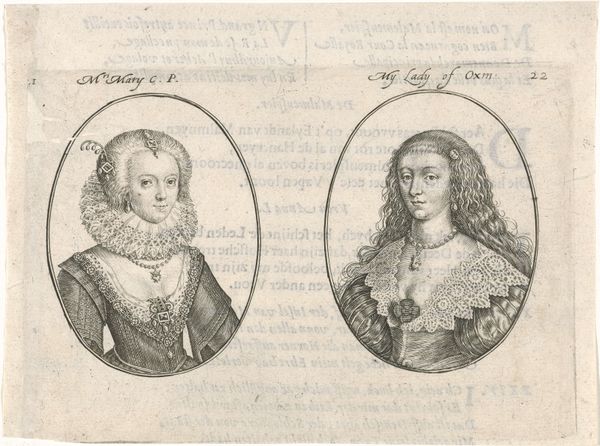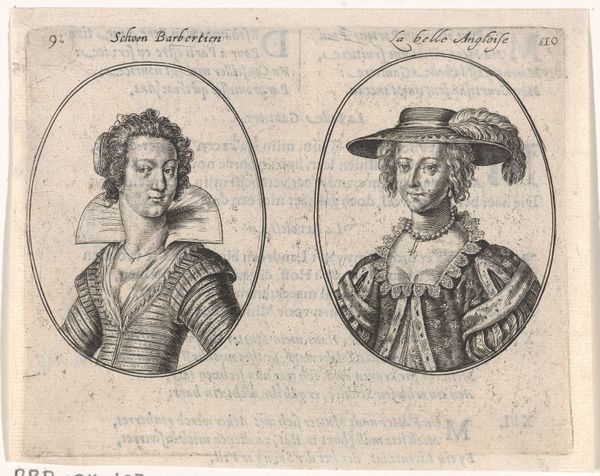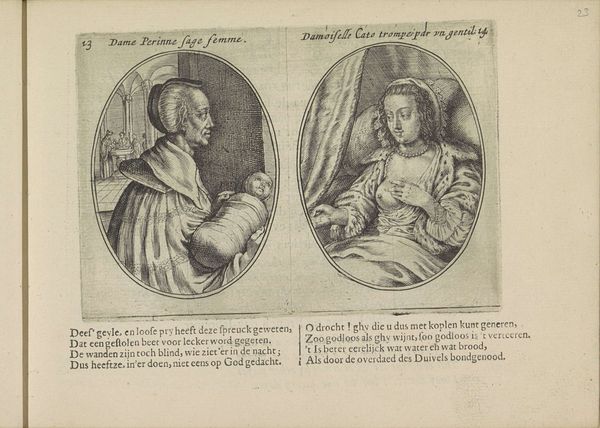
Portretten van de courtisanes Maria van Straatsburg en slagersvrouw Catrijn van Praag 1635
0:00
0:00
print, engraving
#
portrait
#
baroque
# print
#
old engraving style
#
genre-painting
#
engraving
Dimensions: height 109 mm, width 77 mm, height 109 mm, width 77 mm
Copyright: Rijks Museum: Open Domain
Curator: Here we have a fascinating double portrait, a print created around 1635 by Crispijn van de Passe the Younger. Titled "Portraits of the Courtesan Maria van Straatsburg and the Butcher's Wife Catrijn van Praag," it's currently held in the Rijksmuseum. What's your immediate take? Editor: It strikes me as a somewhat unsettling juxtaposition. The contrast in presentation and presumed social standing between these two women is quite stark, even though both are framed in these neat, almost decorative ovals. There's a clear attempt to comment on class, perhaps, or morality. Curator: Indeed. Van de Passe, through the medium of engraving, has made very deliberate choices in depicting these women. Consider the materiality: the printmaking process allows for reproducibility, disseminating these images widely. This wasn't a commission for a wealthy patron, but a commercially produced artwork meant for consumption by a broader public. We also can consider the materials. He used an engraving on paper to portray members of two working groups. The social context here is very present in both what is being said in the bottom and how it is depicted through clothes and setting in each scene. Editor: Absolutely. The clothing, for instance. Maria is depicted with a large hat and extravagant ruff, elements of adornment suggestive of her profession. The butcher's wife, Catrijn, seems comparatively modestly attired, yet wears a fur and beaded necklace of notable wealth. There's this suggestion of financial exchange across societal barriers. Was it aimed to judge people on those positions? I find it really curious and rich with possible readings, specially if we think that they both can make income on what they do, just from different working roles. Curator: The institutional history also factors in here. Prints like these were often included in collections, or disseminated as broadsheets offering commentary on contemporary life, on the perception and representation of gender and professions in 17th-century society. These images could inform, entertain, or even moralize to the viewing public, really. Editor: It is true. It almost feels like visual journalism of its time, distributed to influence public thought. What started off looking decorative is so charged and multifaceted now! Curator: Precisely. It showcases how materials and socio-historical context come together and transform an image in much richer experience. Editor: Definitely a captivating piece that holds surprising depth to it when one scratches its surface.
Comments
No comments
Be the first to comment and join the conversation on the ultimate creative platform.


